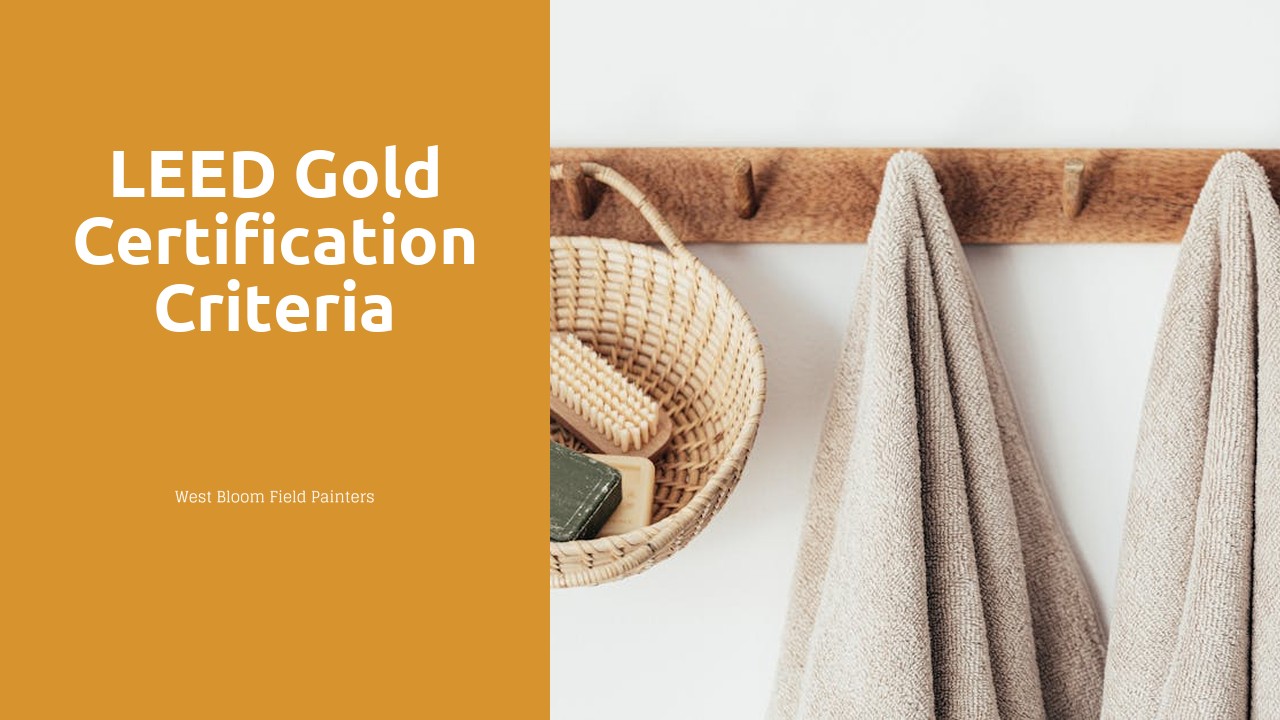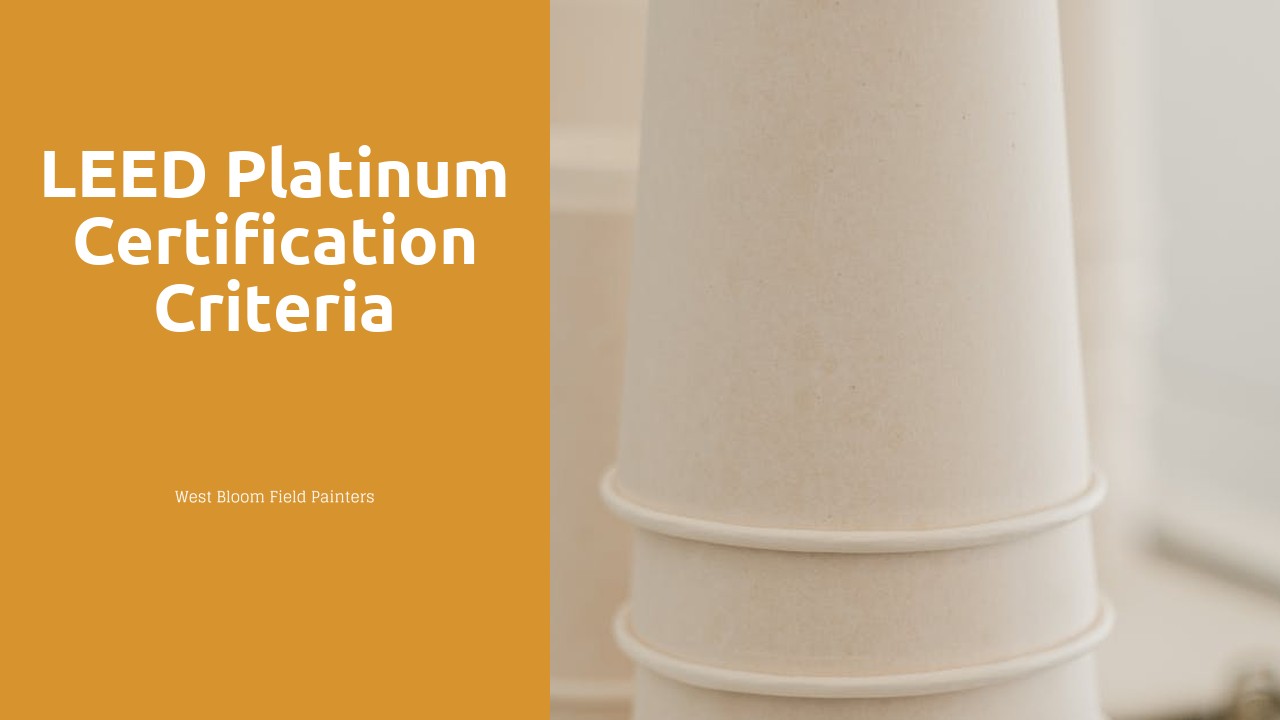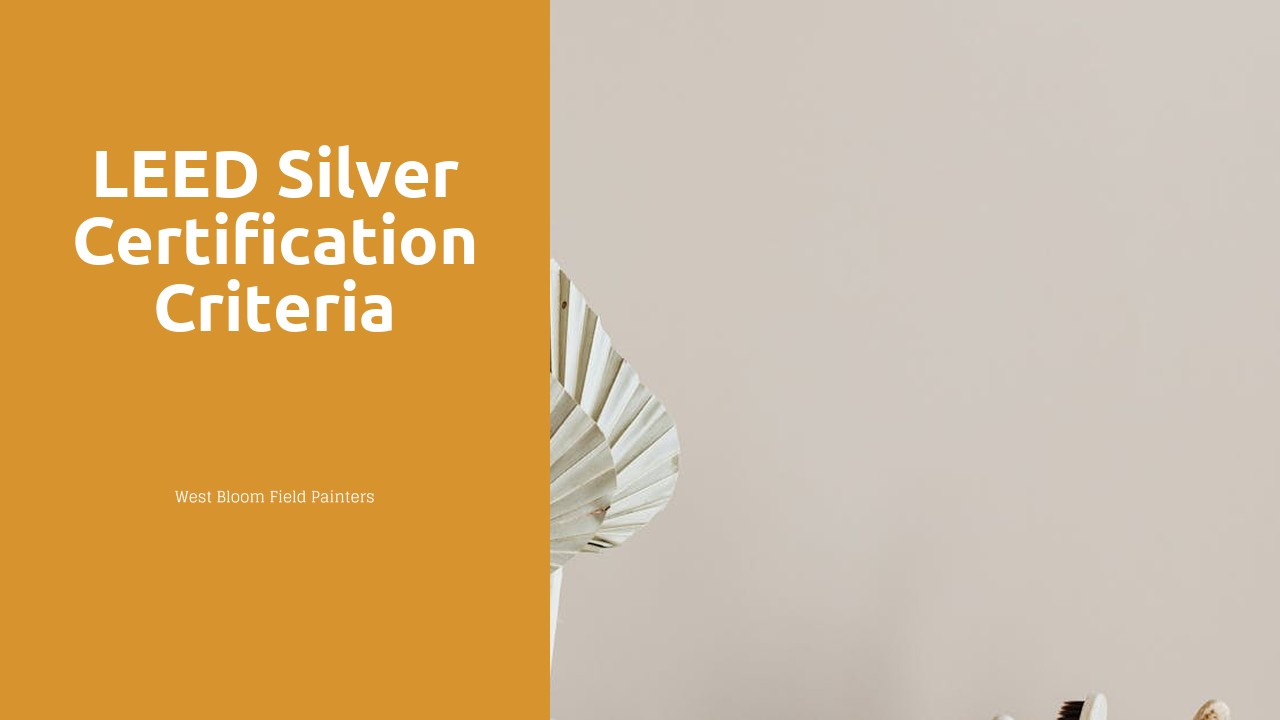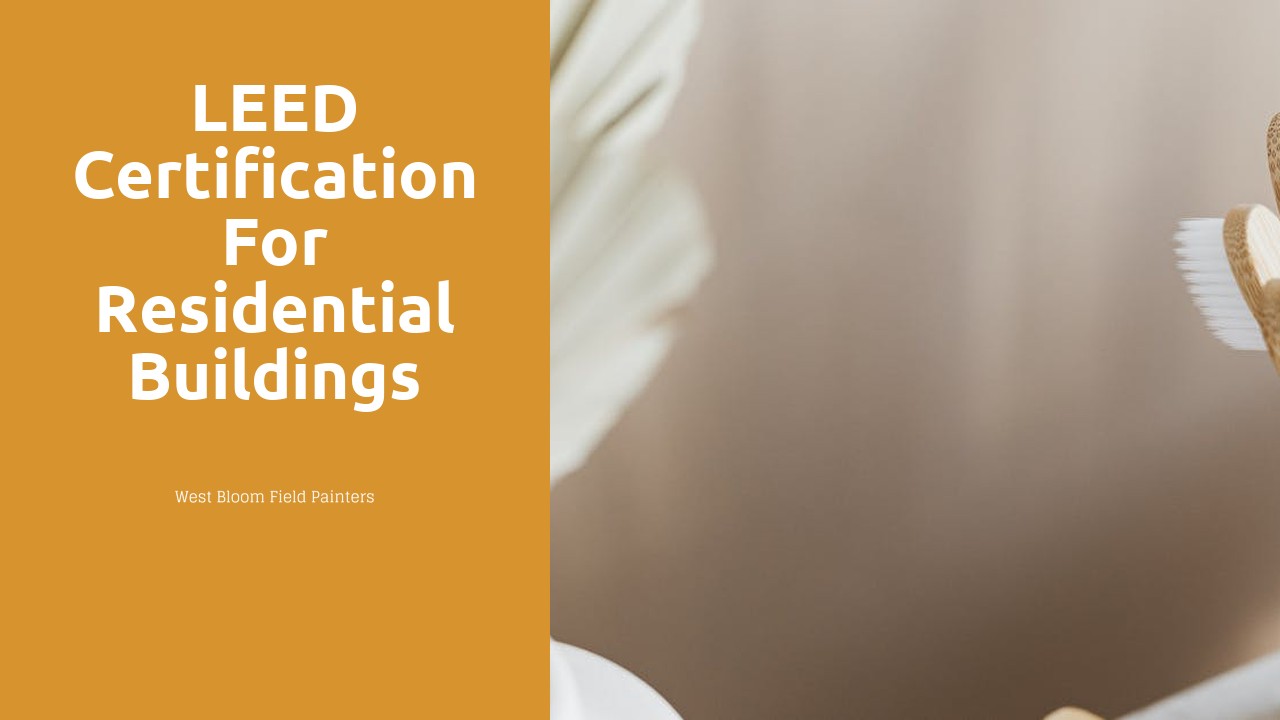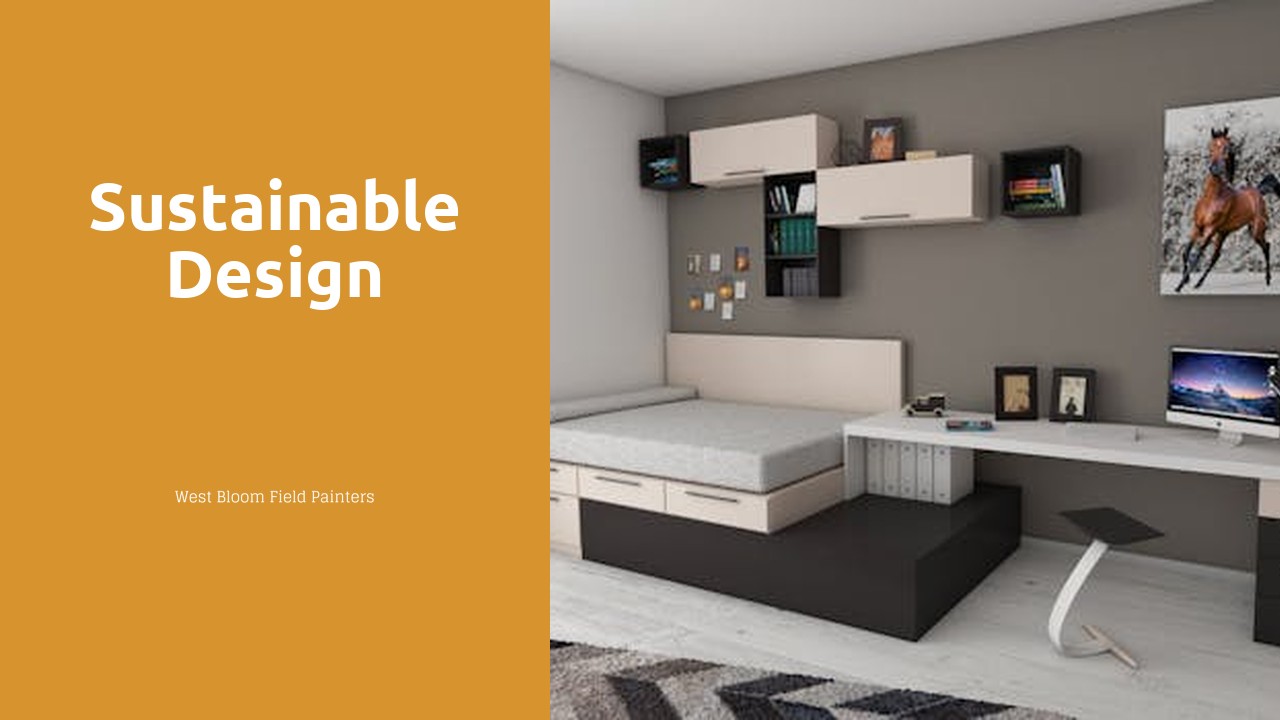
Sustainable Design
Table Of Contents
As a company committed to sustainable practices, West Bloom Field Painters offers a range of services that prioritize environmentally friendly design. Our team of skilled painters are trained in the latest techniques and products that reduce waste and energy consumption. We work closely with clients to choose low VOC paints and eco-friendly materials, ensuring that their projects have a minimal impact on the environment. In addition, we strive to enhance energy efficiency in homes and businesses through proper painting practices. West Bloom Field Painters is dedicated to promoting sustainable design principles that benefit both our clients and the planet.
Sustainable Design Trends
Sustainable design trends in 2021 are focused on incorporating eco-friendly materials and practices into the design process. From utilizing reclaimed wood to upcycling old furniture, designers are prioritizing sustainability in their creations. This shift towards more environmentally conscious design is not only beneficial for the planet but also resonates with consumers who are increasingly seeking ethically produced products.
Another key trend in sustainable design is the use of biophilic elements to bring nature indoors. Incorporating live plants, natural light, and organic materials into interior spaces not only enhances the aesthetics but also promotes a sense of well-being and connectivity to the environment. Designers are embracing this biophilic design approach to create spaces that are not only visually appealing but also contribute to a healthier and more sustainable lifestyle.
Upcycling and Repurposing in Interior Design
One of the most exciting trends in interior design is the concept of upcycling and repurposing. This sustainable approach focuses on giving new life to old or discarded items, transforming them into unique and stylish pieces for the home. By incorporating upcycled elements into interior design, designers can create spaces that are not only visually appealing but also environmentally friendly.
Upcycling and repurposing allow for a creative and eclectic mix of materials and styles in interior design. From turning old pallets into chic coffee tables to repurposing vintage doors as statement pieces, the possibilities are endless. This trend not only adds character and personality to a space but also reduces waste and helps to promote a more sustainable lifestyle.
Sustainable Design in Product Development
Sustainable design in product development has become a pivotal focal point for many industries striving to reduce their environmental footprint. Companies are increasingly incorporating eco-friendly practices into their manufacturing processes to create products that not only meet consumer needs but also support a healthier planet. Utilizing recycled materials is a key strategy in this endeavour, with many manufacturers sourcing post-consumer waste to create new products without further depleting finite resources.
Moreover, sustainable product development involves considering the entire lifecycle of a product, from design to disposal. Manufacturers are investing in research and development to create products that are not only durable and functional but also easily recyclable or biodegradable at the end of their life. By embracing sustainable practices in product development, companies are not only contributing to a greener future but also meeting the growing consumer demand for environmentally conscious products.
Utilizing Recycled Materials for EcoFriendly Products
Utilizing recycled materials in the production of eco-friendly products is not just a passing trend, but a fundamental shift towards sustainability in the design industry. Designers and manufacturers are recognizing the importance of reducing waste and conserving resources by incorporating recycled materials into their products. By giving new life to materials that would otherwise end up in landfills, these eco-friendly products contribute to a more circular economy and help minimize environmental impact.
From furniture made from reclaimed wood to clothing crafted from recycled plastic bottles, the possibilities for creating innovative and stylish eco-friendly products are endless. Designers are pushing the boundaries of what can be achieved with recycled materials, showcasing that sustainability does not have to come at the expense of aesthetics. By choosing products that prioritize recycled materials, consumers can not only make a positive impact on the environment but also support a more sustainable approach to design and production.
The Future of Sustainable Design
Looking ahead, the future of sustainable design appears promising, with a growing emphasis on minimizing environmental impact and maximizing efficiency. As technology continues to advance, designers and manufacturers are exploring innovative ways to create products that are not only aesthetically pleasing but also eco-friendly. This shift towards more sustainable practices is not just a trend, but a necessary evolution in the design industry to address pressing environmental concerns.
One key aspect of the future of sustainable design lies in the development of new materials and technologies that enable the creation of products with a reduced carbon footprint. From biodegradable plastics to energy-efficient manufacturing processes, there is a concerted effort to revolutionize the way products are made and consumed. As consumers become more conscientious about the environmental impact of their purchases, the demand for sustainable design solutions is expected to drive further innovation in the industry.
Advancements in Sustainable Technologies
Innovations in sustainable technologies have been rapidly advancing in recent years, revolutionizing the way we approach design and production processes. From energy-efficient manufacturing methods to the implementation of smart systems, these advancements are reshaping the landscape of sustainable design. Companies are increasingly integrating renewable energy sources like solar and wind power into their operations to reduce their carbon footprint and move towards a more environmentally friendly approach.
Moreover, the development of new materials and techniques that promote sustainability is a key focus of research and development in various industries. From biodegradable packaging materials to sustainable building practices, the future of design looks promising with these groundbreaking technologies. As consumers become more conscious of their environmental impact, the demand for products created using sustainable technologies continues to rise, driving further innovation in this field.
FAQS
What is sustainable design?
Sustainable design refers to the practice of creating products, buildings, and environments that are environmentally friendly, socially responsible, and economically viable. It aims to minimize the negative impact on the environment while promoting healthy and sustainable living.
How can upcycling and repurposing be incorporated into interior design?
Upcycling and repurposing in interior design involve taking old or discarded materials and transforming them into new, functional, and aesthetically pleasing pieces. This can be achieved by using reclaimed wood for furniture, repurposing old textiles for upholstery, or upcycling glass bottles into decorative lighting fixtures.
What are some examples of utilizing recycled materials for eco-friendly products in sustainable design?
Examples of utilizing recycled materials in sustainable design include creating clothing from recycled plastic bottles, manufacturing furniture from reclaimed wood, producing household items from recycled glass, and using recycled metals in jewelry making. These practices help reduce waste and promote a circular economy.
How is sustainable design impacting product development?
Sustainable design is revolutionizing product development by encouraging companies to consider the environmental and social impact of their products throughout the entire lifecycle. This includes using eco-friendly materials, reducing energy consumption during production, optimizing packaging for minimal waste, and ensuring products can be recycled or repurposed at the end of their life.
What are some advancements in sustainable technologies shaping the future of sustainable design?
Advancements in sustainable technologies, such as solar panels, wind turbines, green building materials, water-saving technologies, and biodegradable plastics, are driving the future of sustainable design. These technologies help reduce carbon footprint, conserve natural resources, and promote a more sustainable way of living.


